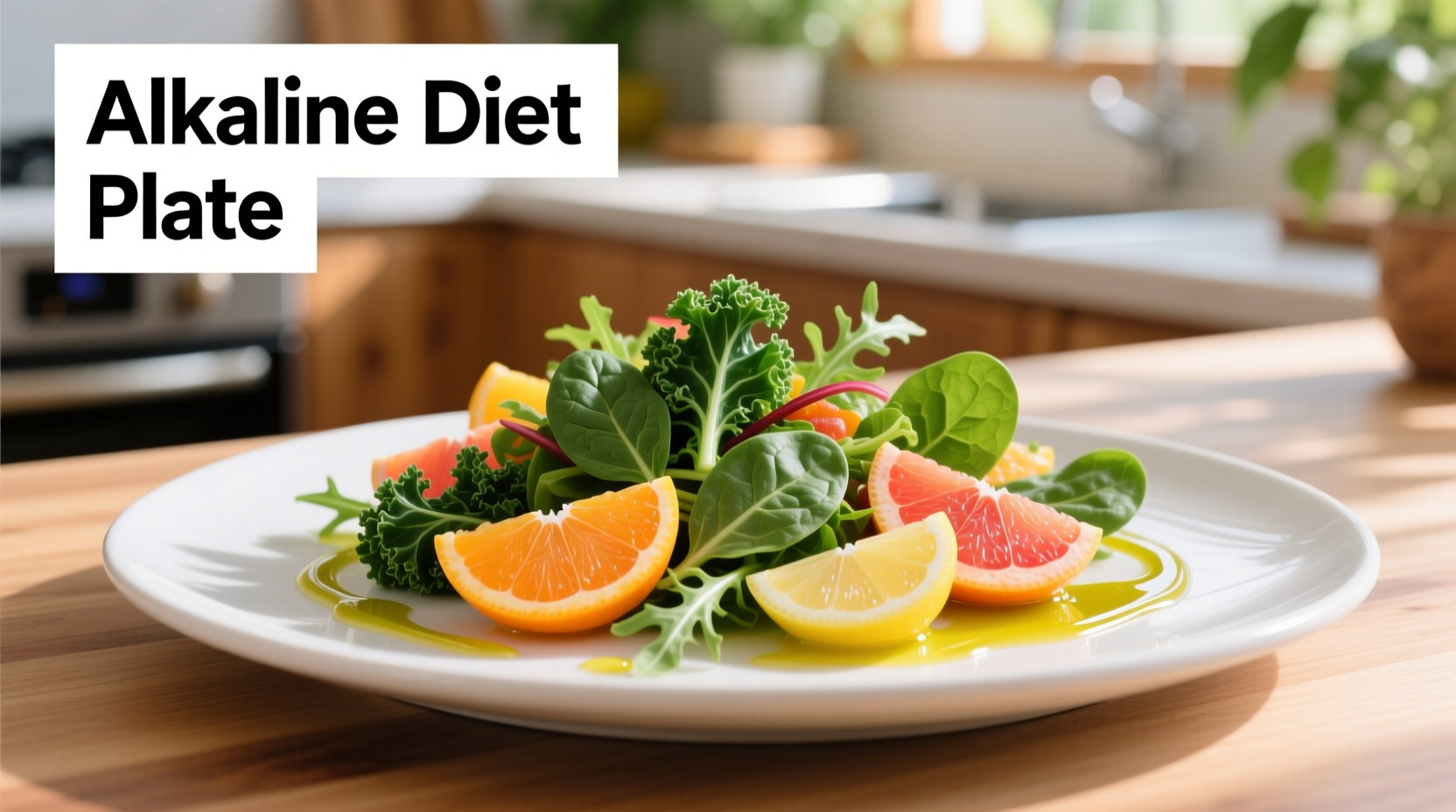Alkaline diet foods primarily include fruits, vegetables, nuts, seeds, and legumes. The most alkaline-forming foods are leafy greens, citrus fruits, root vegetables, and certain nuts like almonds. Processed foods, meats, dairy, and refined grains are typically acid-forming and minimized in this eating pattern.
Curious about which specific foods make the cut for an alkaline diet? You're not alone. Thousands search daily for a clear, practical guide to alkaline-forming foods that actually helps them plan meals. This comprehensive reference cuts through the confusion with science-backed information and actionable meal planning strategies.
Understanding Alkaline Diet Basics: Separating Fact From Fiction
Your body maintains a tightly regulated pH balance between 7.35-7.45, slightly alkaline. The alkaline diet theory suggests that certain foods leave an "ash" after metabolism that affects your body's pH. While your kidneys and lungs naturally regulate blood pH regardless of diet, the foods you eat do create either acidic or alkaline residues in your urine.
According to research published in the Journal of Environmental and Public Health, "Although the body maintains blood pH within a narrow range, dietary patterns can influence the renal acid load and potentially impact bone health and muscle maintenance over time." This explains why many healthcare professionals acknowledge potential benefits of emphasizing alkaline-forming foods, even if the core pH theory is oversimplified.
| Alkaline Diet Food Categories | Top Alkaline-Forming Examples | Acid-Forming Counterparts |
|---|---|---|
| Leafy Greens | Spinach, kale, Swiss chard | N/A (all greens are alkaline) |
| Citrus Fruits | Lemons, limes, grapefruit | None (citrus creates alkaline ash) |
| Root Vegetables | Beets, sweet potatoes, turnips | Regular potatoes (moderately acidic) |
| Nuts & Seeds | Almonds, chia seeds, flaxseeds | Peanuts, walnuts, sunflower seeds |
| Legumes | Lentils, lima beans, mung beans | Most beans are neutral to slightly alkaline |
The Complete Alkaline Food Reference Guide
When planning your alkaline meals, focus on these food groups that consistently test as alkaline-forming in nutritional studies:
Top-Tier Alkaline Powerhouses (PRAL -15 to -22)
These foods create the strongest alkaline effect. Incorporate multiple servings daily:
- Spinach (-15.0)
- Broccoli (-10.0)
- Cucumbers (-6.0)
- Avocados (-15.6)
- Almonds (-2.5)
- Lemons (despite acidic taste, creates alkaline ash)
Surprising Alkaline Foods You Might Not Expect
Many assume citrus fruits are acid-forming, but they actually have an alkalizing effect after metabolism. The National Institutes of Health confirms that "citrus fruits, despite their initial acidity, produce alkaline ash due to their high potassium and magnesium content." Similarly, tomatoes and blueberries, though acidic in taste, create alkaline residues.

Building Balanced Alkaline Meals: Practical Strategies
Transitioning to an alkaline-focused eating pattern doesn't require perfection. Registered dietitians recommend aiming for an 80:20 ratio of alkaline to acid-forming foods for sustainable results.
Your First Week Alkaline Meal Framework
Start with these simple templates that incorporate the most potent alkaline foods:
Breakfast Options
- Green smoothie: spinach, banana, almond milk, chia seeds
- Avocado toast on sprouted grain bread with lemon juice
- Overnight oats with almond milk, blueberries, and pumpkin seeds
Lunch & Dinner Templates
- Large salad with mixed greens, beets, carrots, avocado, and almond slivers
- Stir-fried broccoli, bell peppers, and zucchini with tofu
- Baked sweet potato topped with black beans and fresh salsa
Scientific Context: What Research Actually Says
While the alkaline diet's core premise about changing blood pH is scientifically inaccurate, research shows potential benefits from its emphasis on whole plant foods. A 2012 review in Nutrition Reviews noted that "diets rich in fruits and vegetables (characteristic of alkaline diets) are associated with reduced risk of chronic diseases regardless of their effect on acid-base balance."
The Harvard T.H. Chan School of Public Health states: "The health benefits of the so-called alkaline diet are likely due to its emphasis on fruits, vegetables, and plant-based foods—not because it changes the pH of your blood."
For those considering this eating pattern, registered dietitians recommend focusing on the quality of foods rather than strict pH calculations. The most valuable aspect is increasing intake of nutrient-dense plant foods while reducing processed items.
Common Pitfalls to Avoid With Alkaline Eating
Many people make these mistakes when starting an alkaline-focused diet:
- Misunderstanding citrus - avoiding lemons/limes due to their acidic taste
- Overcomplicating - obsessing over exact pH measurements instead of focusing on whole foods
- Neglecting protein - not including adequate plant-based protein sources
- Eliminating healthy fats - avoiding avocado and nuts due to misconceptions
Registered dietitians recommend using alkaline principles as a framework for increasing plant food consumption rather than a rigid dietary system. The most sustainable approach focuses on gradual incorporation of alkaline-forming foods while maintaining balanced nutrition.
When to Consult a Healthcare Professional
While an alkaline-focused eating pattern emphasizing fruits and vegetables is generally safe, consult a healthcare provider before making significant dietary changes if you have kidney disease, are taking medications affected by potassium intake, or have other medical conditions. The National Kidney Foundation notes that "individuals with kidney disease may need to limit certain high-potassium alkaline foods like bananas and oranges."











 浙公网安备
33010002000092号
浙公网安备
33010002000092号 浙B2-20120091-4
浙B2-20120091-4